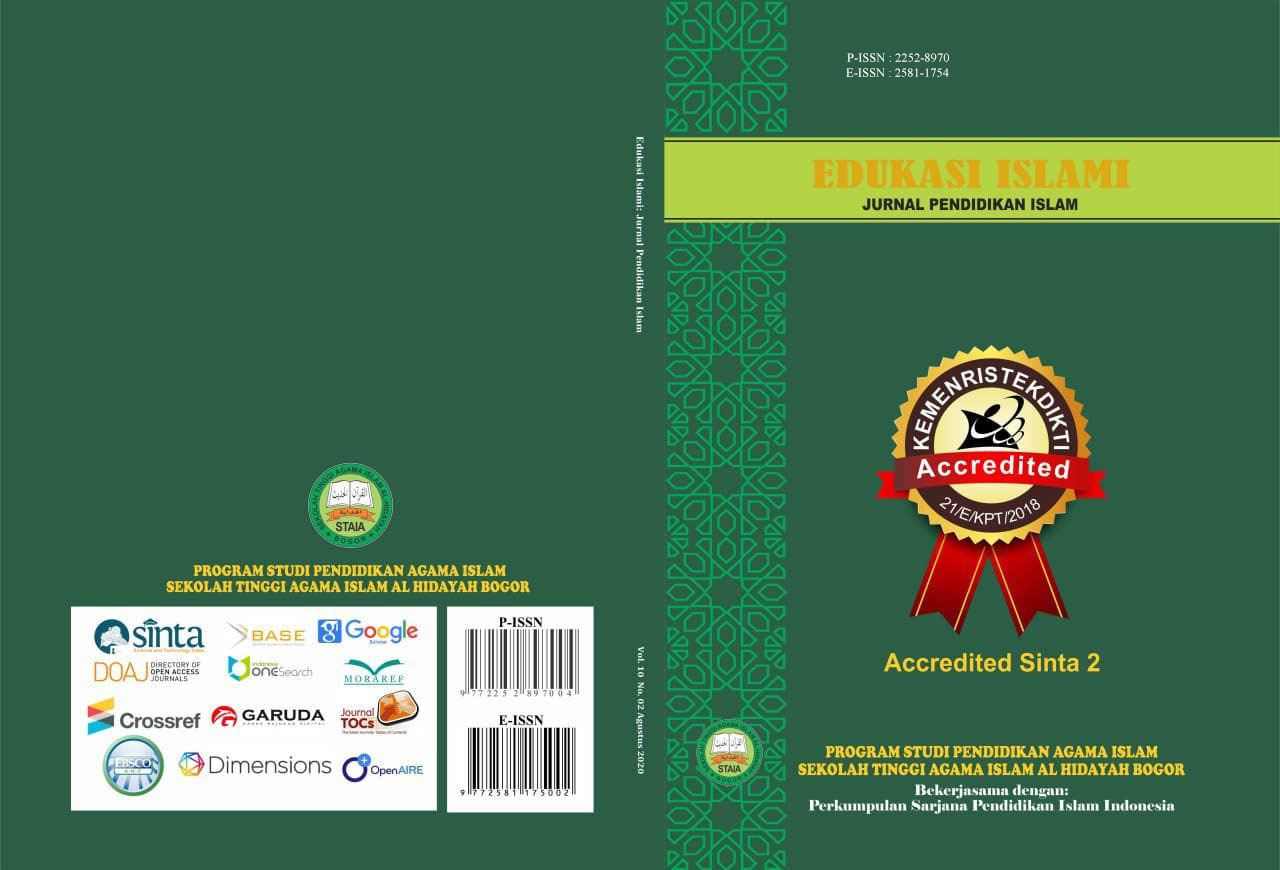THE LIVING PHILOSOPHY OF TUMPENG: PRESERVING JAVANESE CULTURAL IDENTITY IN THE MODERN ERA
DOI:
https://doi.org/10.30868/ei.v14i03.8957Keywords:
Tumpeng; Javanese Culture, Local Wisdom, Civic Culture, Cultural IdentityAbstract
Background: This study explores the living philosophy, cultural significance, and resilience of the tumpeng tradition as part of Javanese cultural identity in the context of modernization and globalization. Framed within the broader discourse of cultural heritage, the research highlights how tumpeng is more than a ceremonial dish; it symbolizes local wisdom and civic values through its conical shape, color, and carefully selected side dishes that together reflect gratitude, balance, humility, and spiritual devotion. Purpose: The study aims to examine how these meanings are transmitted across generations and the challenges posed by changing lifestyles, urbanization, and the rise of global consumer culture. Method: Using a qualitative descriptive approach grounded in literature review and cultural analysis, the article finds that the practice of preparing and sharing tumpeng functions as an intergenerational educational process that sustains communal bonds and ethical reflections, keeping cultural memory alive as an ongoing practice rather than a fixed inheritance. Result: However, the continuity of this tradition is threatened when younger generations perceive it as outdated or when rituals are performed without understanding their deeper philosophical context. Conclusion: The study concludes by suggesting adaptive strategies such as integrating cultural education in formal and informal contexts, promoting storytelling and community workshops, and using the creative economy to engage youth while maintaining authenticity. Ultimately, the findings reaffirm that tumpeng endures as a living cultural practice that not only preserves local wisdom but also offers ethical guidance for navigating modern life.
References
Barakat, S. (2021). Necessary conditions for integrated approaches to the post-conflict recovery of cultural heritage in the Arab World. International Journal of Heritage Studies, 27(5), 433-448. https://doi.org/10.1080/13527258.2020.1799061.
Heersmink, R. (2023). Materialised identities: Cultural identity, collective memory, and artifacts. Review of Philosophy and Psychology, 14(1), 249-265. https://doi.org/10.1007/s13164-021-00570-5.
Imamah, F. M. (2025). Food and the Concept of Salvation: Questioning Javanese Ethics in Environmental Issues. Populasi, 33(1), 50-64. https://doi.org/10.22146/jp.104662.
Jayasinghe, S., Byrne, N. M., & Hills, A. P. (2025). Cultural influences on dietary choices. Progress in Cardiovascular Diseases. https://doi.org/10.1016/j.pcad.2025.02.003.
Magill, K. R., Scholten, N., Blevins, B., & Smith, V. D. (2024). The importance of civic culture: Toward intellectual solidarity and community agency. Education, Citizenship and Social Justice, 19(1), 139-161. https://doi.org/10.1177/1746197922113043.
Maulana, M. F., Alnizar, F., & Amanulloh, N. (2025). Symbols, identity, and tradition: The linguistic anthropology of Javanese traditional food. Jurnal Antropologi: Isu-Isu Sosial Budaya, 27(1), 76-87. https://doi.org/10.25077/jantro.v27.n1.p76-87.2025.
Pianto, H. A., Hadi, S., & Nurcholis, A. (2022). Tradisi tumpengan: simbol kehidupan masyarakat Jawa. Bandar Maulana: Jurnal Sejarah Kebudayaan, 27(1). https://doi.org/10.24071/jbm.v27i1.5807.g3029
Pertiwi, S. A., Harjanto, R., Damayanti, N., Sari, Y., & Akib, S. (2023). Decoding the meaning of Tumpeng in Roland Barthes’s semiology perspective. WACANA: Jurnal Ilmiah Ilmu Komunikasi, 22(2), 392-399. https://doi.org/10.32509/wacana.v22i2.3553.
Pranoto, D. S. (2024). Menyelami Makna dan Filosofis Budaya Tumpeng sebagai Simbol Identitas Kearifan Lokal Bagi Masyarakat. Advances In Social Humanities Research, 2(3), 415-426. https://doi.org/10.46799/adv.v2i3.209.
Pugra, I. W., Kencanawati, A. A. A. M., & Kurniawan, I. G. W. A. (2025). The cultural significance of traditional foods in shaping Indonesian social identity: Challenges and preservation strategies. Journal of Language, Literature, Social and Cultural Studies, 3(1), 21-31. https://doi.org/10.58881/jllscs.v3i1.318.
Sakti, S. A., Endraswara, S., & Rohman, A. (2024). Revitalizing local wisdom within character education through ethnopedagogy apporach: A case study on a preschool in Yogyakarta. Heliyon, 10(10). https://doi.org/10.1016/j.heliyon.2024.e31370.
Sari, I. P. (2025). Perayaan Melalui Makanan: Studi Komparatif Nasi Tumpeng dan Osechi Ryōri Jepang. IZUMI, 14(1), 22-32. https://doi.org/10.14710/izumi.14.1.22-32.
Sugiyono. (2019). Metode Penelitian Kuantitatif, Kualitatif, dan R&D (Cetakan ke-27). Bandung: Alfabeta.
Septhia, N. D., Izdihar, N. S., Destiani, N. L. F. L., Rindiani, N., Izdihar, R. S., & Setyawan, A. D. (2024). Ethnobiological study of tumpeng, traditional food in Surakarta City, Central Java, Indonesia. Asian Journal of Ethnobiology, 7(1). https://doi.org/10.13057/asianjethnobiol/y070107.
Surya, R., Nurfatimah, R. P., Nugroho, D., & Tedjakusuma, F. (2025). Tumpeng: Cultural, historical, and nutritional analysis of Indonesia’s traditional rice dish. Canrea Journal: Food Technology, Nutritions, and Culinary Journal, 133-153. https://doi.org/10.20956/canrea.v8i1.1375.
Wardana, A. A., & Setiarto, R. H. B. (2024). Unveiling the cultural significance and development of “wajik”, a traditional Javanese food. Journal of Ethnic Foods, 11(1), 22. https://doi.org/10.1186/s42779-024-00237-3.
Widiatmaka, P., Wibowo, A., & Purwoko, A. A. (2023). Strategy Of Civic Education Teachers In Building Student Social Character to Maintain Local Culture In The Society 5. 0 Era. Jurnal Pendidikan Pancasila Dan Kewarganegaraan, 4(1), 63-79. https://doi.org/10.26418/jppkn.v4i1.53961.
Zamhari, M. (2023). Culinary in Islamic-Javanese Cultural Heritage from a Chemistry Perspective. Journal of Tropical Chemistry Research and Education, 5(2), 43-59. https://doi.org/10.14421/jtcre.2023.52-05.
Downloads
Published
Issue
Section
Citation Check
License
Copyright (c) 2025 Heru Syahputra, Hasyimsyah Nasution, Amroeni Drajat

This work is licensed under a Creative Commons Attribution 4.0 International License.
Authors who publish with this journal agree to the following terms:
- Authors retain copyright and grant the journal right of first publication with the work simultaneously licensed under a Creative Commons Attribution License that allows others to share the work with an acknowledgment of the work's authorship and initial publication in this journal.
- Authors are able to enter into separate, additional contractual arrangements for the non-exclusive distribution of the journal's published version of the work (e.g., post it to an institutional repository or publish it in a book), with an acknowledgment of its initial publication in this journal.
- Authors are permitted and encouraged to post their work online (e.g., in institutional repositories or on their website) prior to and during the submission process, as it can lead to productive exchanges, as well as earlier and greater citation of published work (See The Effect of Open Access).









